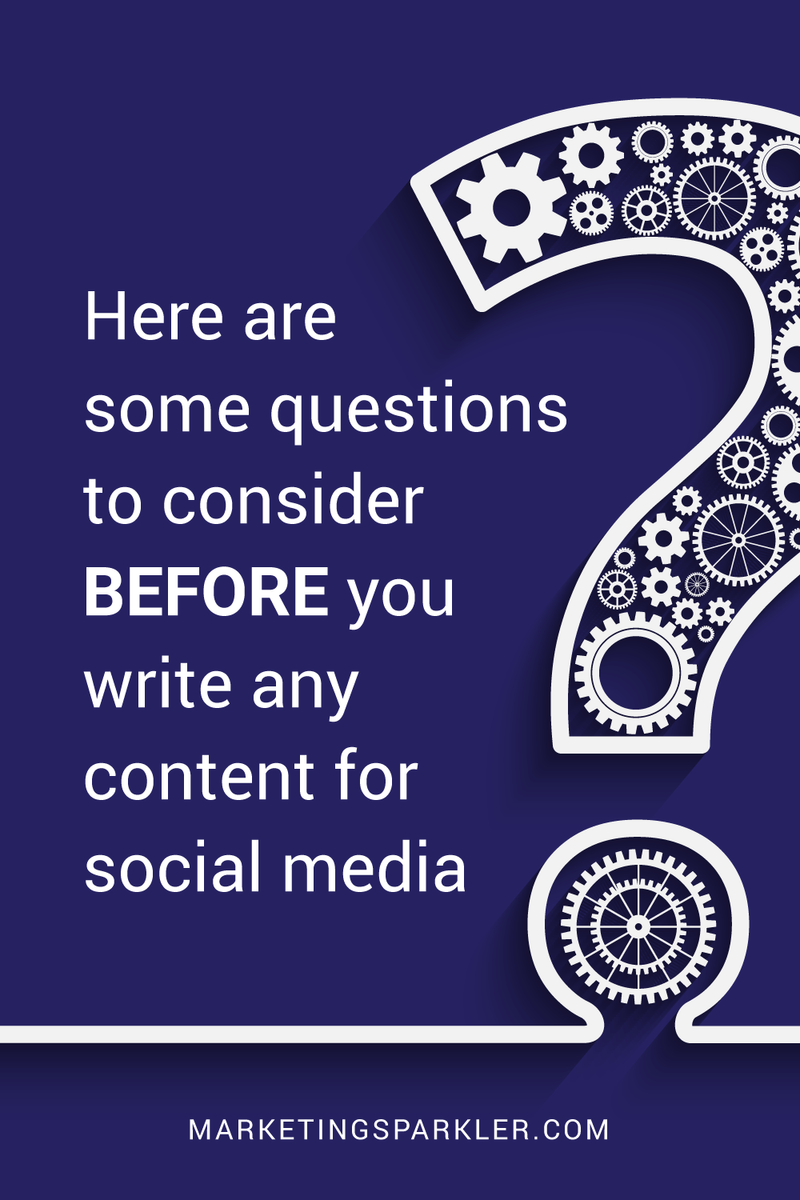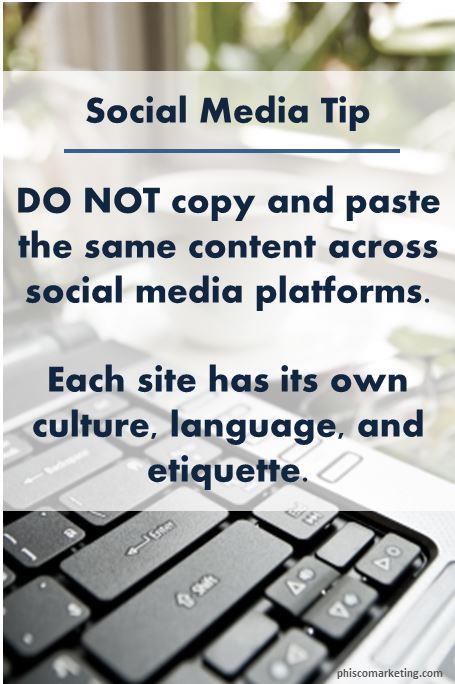When writing copy for different platforms, it’s important to take into consideration the culture of the social media network as well as your audience.
Writing for Social Media
The standards for email copy, website copy, and social media copy are different and there are things you should think about before you write the copy. Not only that, you don’t want to put the same copy up everywhere. You want to be innovative and fresh on each platform that you place any content.
Here are some questions to consider BEFORE you write any content for social media.
1. What Platform Rules Exist?
Each platform has its own rules that you should keep in mind before you create the copy for that medium.
For example, Twitter language and abbreviations make sense for that platform because of the short character count. However if you use those same abbreviations on Facebook, it kinda looks weird. And if you dare to use them on LinkedIn, you would most certainly tarnish your professional reputation. Especially hashtags! Why people lazily autopost on LinkedIn with hashtags is beyond me. It looks terrible.
So please, consider the rules and etiquette of each platform as you post and engage.
2. Should Your Content Be Short or Long?
Each social media platform requires different lengths of content. As you know, with Twitter, you only have 140 characters to get your point across. With Facebook you have a bit more space, as with others. On your blog you technically have unlimited space. So consider which social media you’re writing for before you write the copy.
3. Which Subset of Your Audience Is Here?
Every person who is a member of your target audience does not have access to you via every single social media network. Some will be on Twitter, some on Pinterest and some will only want to read your blog. It’s up to them, and something you should think about. You can study which subset of your audience is following you on each network, so you can focus on writing social media content specifically geared toward them.
4. Is the Platform Stiff (like LinkedIn) or More Loose Like Twitter?
Some platforms are more serious and professional. That means that sharing that picture of the cat hung up in the blinds might not be a good idea on LinkedIn. On second thought, it’s a terrible idea! However, sharing it on Facebook might be the best thing ever, even if you can’t relate it to your business and you just felt like posting a random funny.
5. Should You Use #Hashtags or Keywords?
Even Facebook has joined the practice of using hashtags, but is it appropriate to use them on every platform? Please noooooo. Using them too much may show that you’re not that creative after all. Or worse, it shows that you are not too social media savvy. And by all means, if you’re going to use hashtags, limit it to a maximum of three per post, on most platforms. The only time this 3-hashtag rule wouldn’t apply is Instagram. You get a max of 30 hashtags you can use on Instagram, so go ahead and use them!
Sidebar: Yet another reason why should not auto-sync your posts across social media platforms. Facebook technically allows them but for the most part they hold little meaning. So keep the hashtags on Twitter and Instagram please.
Are you one of those who auto-shares Instagram posts to Facebook? First, please stop. Edit your Instagram post BEFORE posting it to Facebook. Seeing all those freakin hashtags on Facebook posts are annoying. {end rant}
Instead of trying to stuff hashtags into your posts, why not use a keyword-rich caption instead? When you decide on which keyword (or keyword phrase) your post should be about, it will help you to craft a more enriched caption. The keyword (or phrase) will serve as your guide post, ensuring that your caption is meaningful for your audience and fits your desired post objective.
6. Is the Platform Visually Based?
Where do image updates best fit versus text-based updates? Yes, it’s true that Twitter is trying to be more visual. But, Pinterest and Instagram still lead the charge on being visual, with Facebook bringing up the rear. So posting a text-based update on Facebook doesn’t have the same effect as posting a graphic update. You should consider that prior to creating the content.
7. What Is Your Objective?
What is the point of your update or share? Do you know what you are hoping to achieve? Do you have a well thought out, specific, numbers-driven objective in which you can measure results?
8. Should You Include a CTA?
You should include a CTA (Call To Action), but how you do it on each social media network is what’s important. What type of CTA would tick off your audience, or would get you kicked out of the social media network? Don’t get banned.
9. Is Your Copy Sharable?
A really important factor for social media copy is whether or not it’s shareable. Shorter, visually oriented, relatable content is better to post on social media when you want it to be shared.
What’s your content strategy?
In summation, writing for social media is different from writing keyword-rich articles, just like writing blog posts is different from writing keyword-rich articles. As you create your content strategy, these differences must be apparent to you in order to achieve success.
So please, don’t do a lazy copy and paste every time you post content from one platform to the next.
Did I say lazy? Yeah, I did. I don’t want you to look lazy. I’m guessing you work too hard in your business to look like you don’t care enough about your audience to create special content for them. Hey, I’m just looking out for you!
Ciao,
Miss Kemya




[…] writing for people first and search engines […]
[…] Using them to promote your business for you is a great way to get new customers. Be sure to create content that your fans can share in order to attract new […]